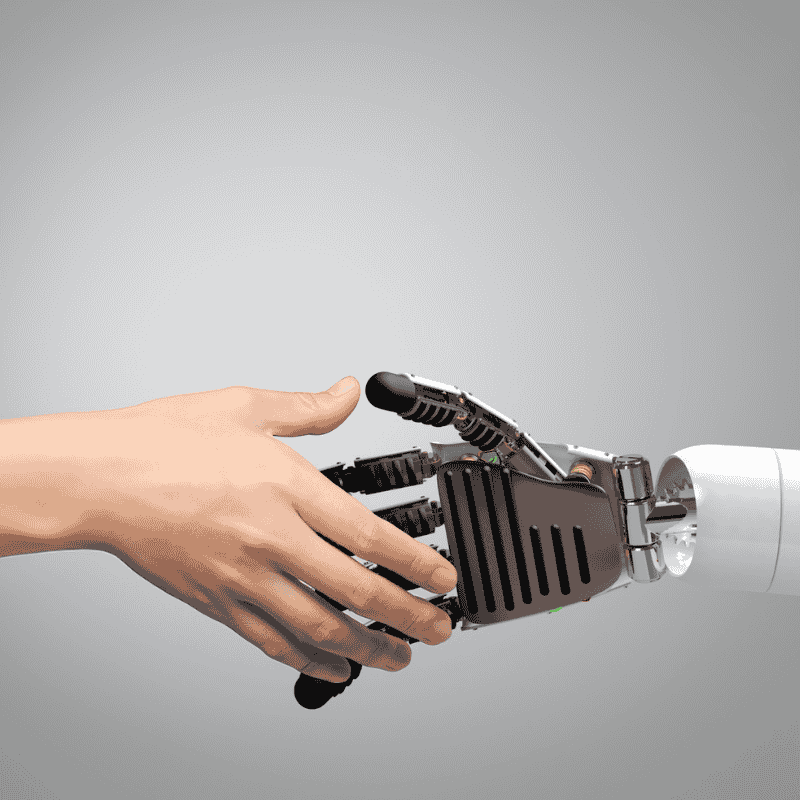AI Workflow automation: The Ultimate Game-Changer for Business Efficiency According to AI Workflow Automation: What is it and How Does It, industry trends support these insights. According to AI Workflow Automation: How it Can Improve Your Bu, industry trends support these insights.
AI workflow automation has revolutionized how businesses operate in 2025. The best AI workflow automation solutions are transforming industries by introducing intelligence, adaptability, and real-time decision-making into everyday processes. Gone are the days of manual, repetitive tasks that drain time and resources. Instead, AI workflow automation systems are enabling businesses to streamline operations, reduce costs, and focus on what truly matters—growth and innovation.
In today’s fast-paced world, businesses face unprecedented challenges: operational bottlenecks, rising costs, and the need for scalability. Traditional automation methods, while helpful, often fall short in addressing these complexities. That’s where AI workflow automation tools step in, offering a breakthrough approach to solving these pain points. By leveraging artificial intelligence, machine learning, and natural language processing, these tools not only automate tasks but also learn and adapt to optimize workflows over time.
The benefits of AI workflow automation are incredible. From reducing human error to enhancing decision-making, these systems empower teams to focus on high-value tasks while mundane processes are handled seamlessly. Whether you’re in healthcare, finance, e-commerce, or any other industry, AI workflow automation solutions are proving to be essential for staying competitive in an ever-evolving market.
In this article, we’ll explore how AI workflow automation can improve business efficiency, the key advantages it offers, and practical steps to implement it in your organization. We’ll also dive into real-world applications, compare AI automation with traditional methods, and highlight the best AI workflow automation tools for 2025. By the end, you’ll have a clear understanding of how this revolutionary technology can future-proof your business and drive measurable results.
Ready to unlock the full potential of AI workflow automation? Let’s dive in and discover how it can transform your business operations for the better.
The AI Workflow Automation Benefits Every Business Needs to Know
In today’s fast-paced business environment, efficiency is the cornerstone of success. Companies are constantly seeking ways to streamline operations, reduce costs, and improve productivity. That’s where AI workflow automation comes in—a game-changing solution that introduces intelligence, adaptability, and real-time decision-making to traditional process automation. By leveraging artificial intelligence, businesses can transform their workflows, eliminate bottlenecks, and achieve unprecedented levels of efficiency.
What is AI Workflow Automation?
AI workflow automation is the integration of artificial intelligence, machine learning, and natural language processing to automate and optimize business processes. Unlike traditional automation, which relies on predefined rules, AI-powered workflows can learn, adapt, and make decisions in real time. This makes it a powerful tool for businesses looking to scale operations, reduce human error, and focus on high-value tasks.
For example, a customer service team can use AI workflow automation to handle routine inquiries, freeing up agents to tackle more complex issues. Similarly, finance departments can automate invoice processing, reducing manual effort and minimizing errors. The possibilities are endless, and the benefits are transformative.
Key Advantages of AI Workflow Automation
Here are some of the most compelling AI workflow automation benefits that can revolutionize your business:
- Enhanced Efficiency: By automating repetitive tasks, businesses can complete processes faster and with greater accuracy. This allows employees to focus on strategic initiatives that drive growth.
- Cost Savings: Automating manual tasks reduces operational costs, such as labor expenses and error-related losses.
- Scalability: AI workflow automation enables businesses to handle increased workloads without the need for additional resources.
- Improved Decision-Making: AI-powered workflows provide real-time insights and data-driven recommendations, helping businesses make smarter decisions.
- Consistency Across Operations: Automation ensures that processes are executed uniformly, reducing variability and improving quality.
Real-World Applications of AI Workflow Automation
The AI workflow automation features are versatile and can be applied across various industries. Here are a few examples:
- Healthcare: Automating patient appointment scheduling and medical record management to improve patient care.
- E-commerce: Streamlining order processing and inventory management to enhance customer satisfaction.
- Finance: Automating fraud detection and compliance reporting to reduce risks and ensure regulatory adherence.
- HR: Simplifying recruitment processes, such as resume screening and candidate shortlisting, to save time and resources.
How to Get Started with AI Workflow Automation
Implementing AI workflow automation may seem daunting, but it doesn’t have to be. Here’s a simple roadmap to get started:
- Identify Pain Points: Analyze your current workflows to identify repetitive, time-consuming tasks that can be automated.
- Choose the Right Tools: Select AI workflow automation tools that align with your business needs, such as UiPath for robotic process automation or Zapier for no-code integrations.
- Pilot and Test: Start with a small-scale pilot to test the automation and gather feedback.
- Scale and Optimize: Once the pilot is successful, scale the automation across your organization and continuously optimize for better results.
Why AI Workflow Automation is the Future
As businesses evolve, so do their needs. AI workflow automation is not just a trend—it’s a necessity for staying competitive in a rapidly changing landscape. By embracing this technology, businesses can future-proof their operations, adapt to market demands, and unlock new opportunities for growth.
If you’re ready to explore how AI workflow automation can transform your business, [schedule a product tour](#) today and discover the tools that can take your efficiency to the next level.
Stay tuned for the next section, where we’ll dive deeper into the best AI workflow automation tools for 2024 and how to choose the right one for your business.
How AI Workflow Automation Boosts Business Efficiency
AI workflow automation is revolutionizing how businesses operate by eliminating repetitive tasks, reducing errors, and accelerating decision-making. Unlike traditional automation, AI-powered workflows learn from data, adapt to changes, and continuously optimize processes—making them indispensable for modern enterprises.
Top AI Workflow Automation Benefits
Here’s how businesses gain a competitive edge with AI workflow automation:
- Reduced Operational Costs
– Automating manual tasks cuts labor expenses.
– AI-driven workflows minimize errors, reducing costly rework.
– Example: A financial firm using IBM Watson Automation reduced invoice processing costs by 40%.
- Enhanced Productivity
– Employees spend 30-50% less time on repetitive tasks (McKinsey).
– AI automation tools like Zapier and Make integrate apps seamlessly, eliminating manual data transfers.
- Scalability & Consistency
– AI workflows handle increased workloads without additional hires.
– Ensures uniform processes across departments and locations.
- Real-Time Decision-Making
– AI analyzes data instantly, providing actionable insights.
– Example: Retailers use UiPath’s AI-powered RPA to adjust pricing dynamically based on demand.
AI Workflow Automation vs. Traditional Automation
| Feature | AI Workflow Automation | Traditional Automation |
|————————|————————|————————-|
| Adaptability | Learns & improves | Fixed rules only |
| Error Handling | Self-corrects | Requires manual fixes |
| Decision-Making | AI-driven insights | Predefined logic |
| Scalability | Handles complex tasks | Limited to simple tasks |
When to Choose AI Automation:
- Processes requiring predictive analytics (e.g., demand forecasting).
- Dynamic environments where rules change frequently.
When Traditional Automation Suffices:
- Simple, repetitive tasks (e.g., data entry).
Best AI Workflow Automation Tools for 2024
- Zapier – Best for no-code integrations (Starts at $19.99/month).
- Make (Integromat) – Ideal for visual workflow builders (Free plan available).
- UiPath – Top choice for AI-driven RPA (Enterprise pricing upon request).
- IBM Watson Automation – Best for AI-powered decision-making.
Pro Tip: Start with a free trial to assess compatibility with your workflows.
Implementing AI Workflow Automation: 4 Key Steps
- Identify Repetitive Tasks – Audit processes like data entry, approvals, or reporting.
- Choose the Right Tool – Match features to business needs (see comparison above).
- Train Your Team – Ensure employees understand AI workflows to maximize adoption.
- Monitor & Optimize – Use analytics to refine automation over time.
Common Pitfall: Avoid automating flawed processes—optimize them first.
Final Thoughts
AI workflow automation isn’t just a trend—it’s a necessity for businesses aiming to stay agile and efficient. Whether you’re a small business or an enterprise, integrating top AI workflow automation tools can unlock significant cost savings and productivity gains.
Next Step: Explore AI workflow automation comparison guides to find the best solution for your industry. 🚀
Implementing AI Workflow Automation: A Step-by-Step Guide
AI workflow automation is revolutionizing how businesses operate by introducing intelligent, adaptable, and real-time decision-making into processes. However, implementing AI workflow automation effectively requires a structured approach to ensure seamless integration and maximum efficiency. Below, we break down the process into actionable steps, highlight common challenges, and provide troubleshooting tips to help you succeed.
—
Step 1: Identify Pain Points and Objectives
Before diving into AI workflow automation setup, it’s crucial to identify the specific pain points in your current workflows. For example, are repetitive tasks slowing down operations? Are there frequent errors in data processing? Define clear objectives, such as reducing operational costs, improving accuracy, or speeding up task completion. This step ensures your automation efforts are aligned with business goals.
Pro Tip: Use process mapping tools like Lucidchart or Visio to visualize workflows and pinpoint inefficiencies.
—
Step 2: Choose the Right AI Workflow Automation Tools
Selecting the right tools is critical for successful AI workflow automation integration. Consider factors like ease of use, scalability, and compatibility with your existing systems. For instance:
- Zapier is ideal for no-code integrations across apps.
- UiPath excels in robotic process automation (RPA) for complex tasks.
- IBM Watson Automation offers AI-powered decision-making for enterprise-level workflows.
Common Mistake: Avoid choosing tools solely based on popularity. Evaluate whether they meet your specific needs.
—
Step 3: Design and Configure Automation Workflows
Once you’ve chosen your tools, design the workflows you want to automate. Start with simple, repetitive tasks like data entry or email responses, then gradually move to more complex processes. Use drag-and-drop interfaces in tools like Zapier or Make to configure workflows without coding.
Example: Automate customer support by integrating an AI chatbot with your CRM system. The bot can handle common queries, freeing up your team for more complex issues.
Troubleshooting Tip: Test workflows in a sandbox environment before deploying them live to avoid disruptions.
—
Step 4: Train Your Team and Integrate AI
Training your team is essential for smooth AI workflow automation integration. Educate employees on how to use the new tools and workflows. Encourage feedback to identify areas for improvement. Additionally, ensure your AI systems are integrated with existing software like ERP or CRM platforms for seamless data flow.
Pro Tip: Create a comprehensive training manual or video tutorials to help employees adapt quickly.
—
Step 5: Monitor, Optimize, and Scale
After implementation, continuously monitor the performance of your automated workflows. Use analytics dashboards to track metrics like task completion time, error rates, and cost savings. Based on the data, optimize workflows for better efficiency. As your business grows, scale your automation efforts to cover more processes.
Example: If your AI chatbot resolves 80% of customer queries, consider expanding its capabilities to handle more complex interactions.
Common Mistake: Neglecting ongoing optimization can lead to inefficiencies over time. Regularly revisit your workflows to ensure they remain effective.
—
Expected Outcomes and Success Metrics
By implementing AI workflow automation, businesses can achieve:
- Time Savings: Automating repetitive tasks can reduce processing time by up to 70%.
- Cost Reduction: Streamlined workflows can lower operational costs by minimizing manual labor.
- Improved Accuracy: AI-powered processes reduce human error, ensuring higher data accuracy.
- Scalability: Automated workflows can handle increased workloads without additional resources.
—
Troubleshooting Common Challenges
- Integration Issues: Ensure compatibility between your AI tools and existing systems. Use APIs or middleware if necessary.
- Employee Resistance: Address concerns by highlighting the benefits of automation and providing adequate training.
- Over-Automation: Avoid automating processes that require human judgment or creativity. Focus on repetitive, rule-based tasks.
—
Finally, AI workflow automation is not a one-time project but an ongoing journey. By following these steps and addressing potential challenges, you can unlock significant efficiency gains and position your business for long-term success. Start small, iterate, and scale your automation efforts to transform your operations.
What is AI workflow automation?
AI workflow automation refers to the use of artificial intelligence (AI) to streamline and optimize business processes. It combines AI, machine learning, and natural language processing to automate repetitive tasks, improve decision-making, and enhance operational efficiency. Unlike traditional automation, AI workflow automation adapts to changing data and processes in real time, making it ideal for dynamic business environments. For example, AI-powered tools can automate customer service responses, data entry, and even complex workflows like supply chain management.
How much does AI workflow automation cost?
The cost of AI workflow automation varies depending on the tools and scale of implementation. Entry-level tools like Zapier start at $20/month, while enterprise-grade solutions like UiPath or IBM Watson can range from $500 to $5,000/month. Additional costs may include setup fees, training, and custom integrations. For small businesses, no-code platforms like Make (formerly Integromat) offer affordable options starting at $9/month. It’s essential to evaluate ROI, as AI workflow automation can reduce operational costs by up to 30% through efficiency gains.
How to implement AI workflow automation?
Implementing AI workflow automation involves four key steps:
- Identify Processes: Start by mapping repetitive or time-consuming tasks, such as data entry or customer support.
- Choose Tools: Select tools based on your needs—Zapier for integrations, UiPath for RPA, or Guru for knowledge management.
- Integrate Systems: Connect your existing software (e.g., CRM, ERP) with the automation tool.
- Test and Optimize: Run pilot tests, gather feedback, and refine workflows for maximum efficiency. For example, a retail business might automate inventory management using AI tools to predict stock levels.
What are the benefits of AI workflow automation?
AI workflow automation offers numerous benefits, including:
- Increased Efficiency: Automating tasks reduces manual effort, saving time and resources.
- Cost Savings: By minimizing errors and streamlining operations, businesses can cut operational costs by up to 30%.
- Scalability: AI-powered workflows adapt to growing business needs without additional manpower.
- Improved Accuracy: AI reduces human error in data processing and decision-making. For instance, AI chatbots can handle 80% of customer queries, freeing up human agents for complex issues.
Which AI workflow automation tools are best for small businesses?
For small businesses, user-friendly and cost-effective tools are ideal. Zapier (starting at $20/month) excels in no-code integrations, while Make (starting at $9/month) offers visual workflow automation. UiPath (starting at $420/month) is a robust option for RPA, and Guru (starting at $10/user/month) is perfect for knowledge management. These tools help small businesses automate tasks like email marketing, invoicing, and customer support without extensive technical expertise.
What are common challenges with AI workflow automation?
Common challenges include:
- Integration Issues: Connecting legacy systems with modern AI tools can be complex.
- High Initial Costs: Setup and training expenses may deter small businesses.
- Data Privacy Concerns: Handling sensitive data requires robust security measures.
- Resistance to Change: Employees may hesitate to adopt new technologies. To overcome these, start with small-scale implementations, provide training, and choose tools with strong customer support.
What is the future of AI workflow automation?
The future of AI workflow automation is promising, with trends like hyperautomation (combining RPA, AI, and ML) and industry-specific solutions gaining traction. By 2025, the global AI automation market is expected to reach $13.7 billion, driven by demand in healthcare, finance, and e-commerce. Advances in natural language processing and predictive analytics will further enhance AI’s ability to handle complex workflows, making it indispensable for businesses of all sizes.
By addressing these FAQs, businesses can better understand how AI workflow automation can transform their operations, improve efficiency, and drive growth.
Conclusion: Unlock Efficiency with AI Workflow Automation
AI workflow automation is no longer a futuristic concept—it’s a game-changing solution for businesses looking to streamline operations, reduce costs, and boost productivity. By leveraging artificial intelligence to automate repetitive tasks, companies can eliminate bottlenecks, minimize human error, and free up employees to focus on high-value work. Whether you’re in finance, healthcare, e-commerce, or any other industry, AI-powered workflows offer scalable, adaptable solutions that grow with your business.
The benefits are undeniable: faster processes, improved accuracy, and significant cost savings. Unlike traditional automation, AI workflow automation learns and adapts, making it ideal for dynamic business environments. Tools like UiPath, Zapier, and IBM Watson demonstrate how AI can transform everything from customer service to supply chain management.
Still hesitant? Consider this: businesses that delay adopting AI automation risk falling behind competitors who are already reaping its rewards. The initial investment pays off quickly through enhanced efficiency and long-term scalability.
Ready to Take the Next Step?
Start by identifying repetitive tasks in your workflow, then explore AI automation tools tailored to your industry. For deeper insights, check out our guide on [AI automation for small businesses](#) or compare [AI vs. traditional automation](#).
Don’t wait—embrace AI workflow automation today and future-proof your operations. [Schedule a demo](#) to see how AI can revolutionize your business efficiency. 🚀






0 Comments